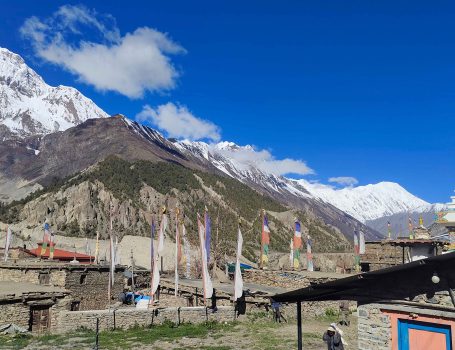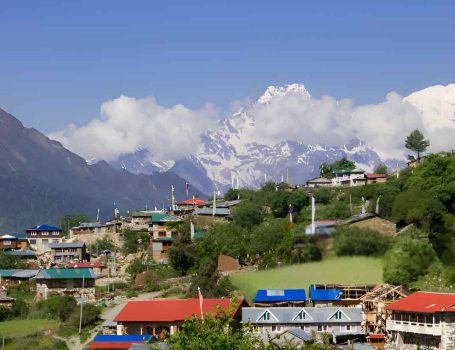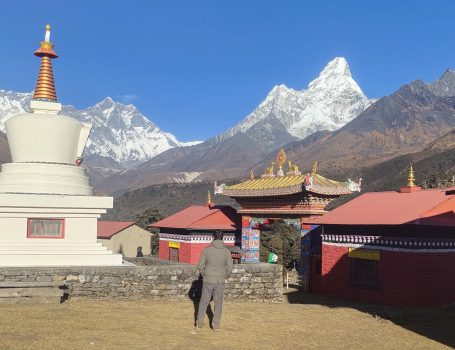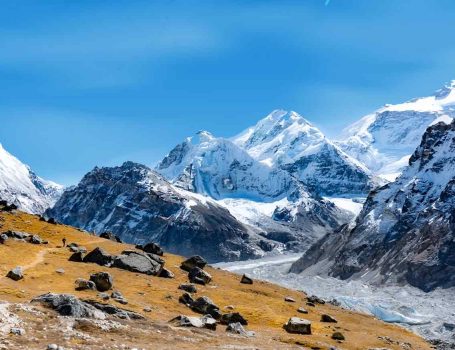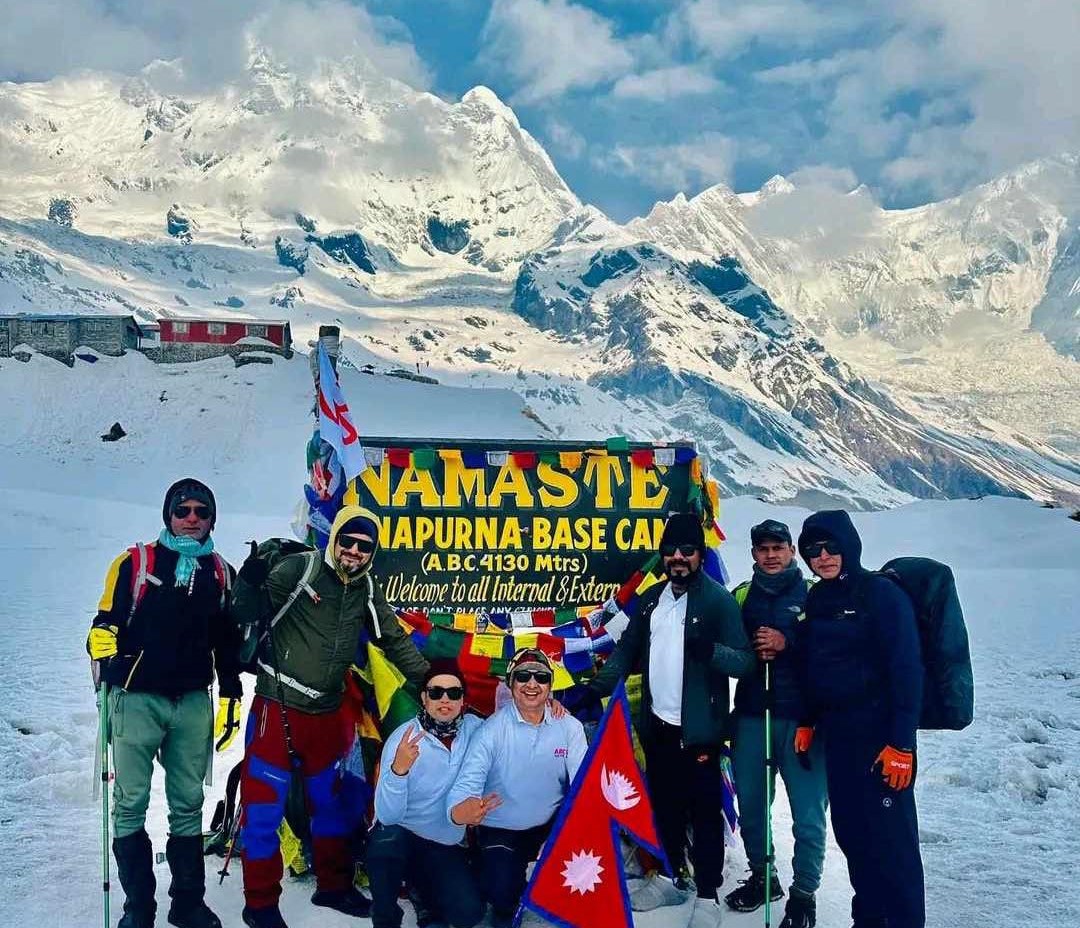Shey Phoksundo Lake Trek

Trip Facts
- Duration 9 Days
- Trip Difficulty moderate
- Max. Altitude 3611m
- Start and End Kathmandu - Kathmandu
- Best Time Spring/ Autumn
- Accommodation Tea House
Trip Highlights
- Explore Nepal’s cultural and traditional history and significance for the unity of the country.
- Enjoy the scenes downward your flight over the Himalayas that set the tone for the adventure.
- Stroll through the ridges of Shey Phoksundo River, which is one of the most scenic lakes.
- Enjoy the most picturesque scenes of lush forests and villages from Dunai to Chhepka.
- Marvel at one of the tallest waterfalls in Nepal, known as Jharna Waterfall
- Trek along the rivers of Bheri and Phoksundo.
- Discover the richness of Tibetan Buddhism directly involved in the periphery.
- Visit the as old monastery 600-year-old Monastery, above the Phoksundo Lake.
Overview
The trek to the Shey Phoksundo Lake is a 12-day thrilling adventure crafted by All Nepal Excursions. This trek unveils the enchanting and pristine blend of beautiful natural and cultural immersion. We start from Kathmandu, where we can explore the historic sites, before taking a flight to Nepalgunj and then joining the Juphal airport. The trek will start from Juphal with the descent towards Dunai. Dubai is the administrative headquarters of the Dolpa district and stands at an elevation of 2000m above sea level.
The trek’s centerpiece is Shey Phoksundo Lake at an elevation of staggering 3611m. This lake is a turquoise marvel that is surrounded by the rugged peaks and stunning views of the neighbouring hills. Tshow Gompa is paired with the Shey Phoksundo Lake, which is at 3700m. This gompa is believed to be a 600-year-old monastery. This monastery offers magnificent views of the mountains and lush hills beyond.
This trek is considered moderately difficult. We will reach up to 3700m at the highest. The trek will immerse us in Dolpo’s untouched and lush landscapes. The Tibetan-influenced culture, Bon and Buddhist monasteries, and Dolpo’s serene wilderness provide us with an immense sense of pride and achievement while on this trek. All Nepal Treks invites everyone to join us on the most thrilling yet rewarding treks of western Nepal. This trek is a perfect escape for thrill-seekers.
Why choose the Shey Phoksundo trek?
The Shey Phoksundo Lake trek is a tranquil and thrilling journey that allows us to immerse ourselves with the adventurers and the cultural fanatics off the off-beat route in Nepal’s one of the most remote places. This trek provides the awe-inspiring views of the near and far hills. The major attractions of this trek are Shey Phoksundo Lake, Jharna waterfall, and the cultural Ringmo Village. This trek helps the trekkers to immerse themselves in the peaceful and untouched beauty of both nature and culture. All Nepal Excursions believes this could be your dream destination to enjoy the rich culture and tradition.
Main Attraction
This trek’s pinnacle and the majorly focused destination is the turquoise Phoksundo Lake, which is located at 3611m. This lake is paired with the Jharna Waterfall and Tshowa Gompa. The lake offers an awe-inspiring view of the surroundings and a spiritual angle.
History
Dolpo is a historical region, tied with the Tibetan Buddhist and Bon traditions. The Tshowa Gompa is over 600 years old, which reflects the region’s spiritual heritage. The Ringmo Village is committed to the justification of the history that prevails.
Culture
The trek showcases Dolpo’s Tibetan-influenced culture. It is evident in Ringmo Village and its stone houses and chortens bound with the local traditions. Locals often practice the ancient rituals in this Himalayan lifestyle.
Geography
This is a remote region traversed by rugged Himalayan terrain. With elevations from 150m to 3700m, that features the rugged terrains, waterfalls, and the stunning Shey Phoksundo Lake, which is a pinnacle of this trek.
Flora and Fauna
Dolpo has a diverse ecosystem that includes pine forests, alpine meadows, and rare wildlife like blue sheep, snow leopards, and Himalayan Tahr. The flora includes medicinal herbs and vibrant rhododendrons that thrive. The flora and fauna in this trek enhance the experience.
Best Season for the Shey Phoksundo Lake Trek
Spring (March to May)
Spring offers a better atmosphere with mild temperatures at lower altitudes. The blooming landscapes provide the floral beauty of this trek into a different perspective. The moderate weather ensures the experience of comfortable trek. Trails are generally dry, and the festivals like Lhosar during the season add a different buzz in the villages like Dunai and Ringmo. The season provides the blooming flora and fauna that blend with the cultural vibrancy. This season is an ideal season for the trek to Shey Phoksundo Lake.
Autumn (September to November)
Autumn is a uniquely vibrant season for the completion of this trek. The season provides the most effective and efficient conditions for the trek. We will have clarity of weather after the end of the monsoon. So, there are high chances we get the most beautiful Himalayan vistas. Temperatures are also better than others to make the trek easier. Post-monsoon trails are firm and dry, and the major festivals also fall in this season, so the vibrance and buzz in this trek are unique and beautiful.
Difficulty of the Shey Phoksundo Trek
The 12-day Shey Phoksundo Lake Trek is rewarding and challenging at the same time. It is remote and provides basic safety and comfort in the highlands. The trekkers have to prepare for every unforeseen circumstance.
- We will reach around 3700m at Tshowa Gompa. The trek poses the risks of mild altitude sickness. This trek required proper pacing and acclimatization, especially in Phoksundo Lake.
- The Dolpo region is a restricted area due to its remote location and limited facilities. We will have basic lodges and teahouses without emergency medical access. This demands self-sufficiency and careful planning.
- The terrain for this trek is very uneven and steep. This might challenge a trekker’s physical and mental endurance with good fitness.
- The weather can get very unpredictable and uncomfortable at times. The unpredictability challenges the comfort of trekking.
Permits Required
| Permit | Price (USD) |
| Shey Phoksundo National Park Entry Permit | $30 per person |
| Lower Dolpo Restricted Area Permit | $20 per person per week + $5 per additional day |
Altitude Sickness
Altitude
The Shey Phoksundo Lake Trek ranges from the lowest at 150m at Nepalgunj to 3700m at the Tshowa Gompa. The other highest points are Phoksundo Lake at 3611m and Ringmo Village at 3600m.
Acclimatization
Acclimatization is done for the marginal adaptation to high altitude. The gradual ascents from Dunai to Tshowa Gompa help adapt to the thinning level os oxygen. Rest days in Ringmo with the short hikes reduce the possibility of altitude sickness risks.
Precaution
We have to stay hydrated and ascend slowly will help us take the precautions. We have to take light nut nutritious meals and follow the advice. The guide will check on you if you have shown any kind of symptoms.
Basic Treatment
If you show any kind of symptoms, the first thing we do is to descend immediately. If those symptoms persist, use Diamox. Staying hydrated and resting enough will help with the minor altitude sickness symptoms. The first aid will help with mild injuries.
Rescue
The rescue process can be very challenging and very expensive due to Dolpo’s remote and inaccessible conditions. Helicopter rescue is limited in Juphal, but they are very costly. We recommend that you have travel insurance that covers the cost of medicals and evacuations.
Insurance
Travel Insurance is very necessary during the treks to Shey Phoksundo Lake. As we travel the higher altitudes and remote terrains, there are lingering unforeseen risks. Medical Insurance should cover the high-altitude rescue and medical bills that can be hefty for your hard-earned money. Ensure that the coverage extends to 5350m and includes adventure activities. Always verify the policy details before buying the insurance. All Nepal Excursions will help in choosing the best travel insurance for you. Feel free to text us anytime.
Food and Accommodation during the Trek
Food
The food during the trek will primarily be prepared by the camping crew at the campsites due to the remoteness of the trail. The food will be simple, hearty dishes like dal bhat, noodles, soups, Tibetan bread, and so on. Fresh vegetables will not be available during the high-altitude treks like this, so expect preserved or canned food. The city areas like Kathmandu and Nepalgunj will provide ample food options with a variety. We recommend that you carry snacks like energy bars and chocolates to sustain you on the longer trekking days.
Accommodations
Accommodations during the trek are very basic. Teahouses in Dunai and Ringmo offer basic beds and blankets with shared facilities. These teahouses often lack electricity and a heating system. We have to use our sleeping bags even if a blanket is provided. With just the basic pit toilets and no hot showers in the remote areas, Facilities are minimal and very basic. Trekkers should prepare for the rustic conditions and carry the appropriate gear for a comfortable trek.
Additional Activities during the Shey Phoksundo Trek
The Shey Phoksundo Lake Treks offers more than just a trek. We will have various opportunities to enrich our experience through cultural and natural, with spiritual connections to the Dolpo’s remote landscapes.
- We will engage with the cultural activities in the villages like Ringmo. We can learn about the Tibetan Buddhist traditions.
- We will have ample opportunities to have the photogenic moments besides Shey Phoksundo and the surrounding area.
- We will visit the 600-year-old Monastery of Tshowa Gompa and learn about its cultural heritage.
- We might be lucky to see some of the rare wildlife, like blue sheep and snow leopard, during our trek.
- We will have an enchanting experience of walking near the Jharna Waterfall and observing the alpine flora.
